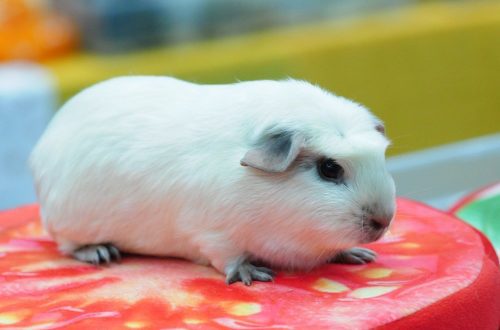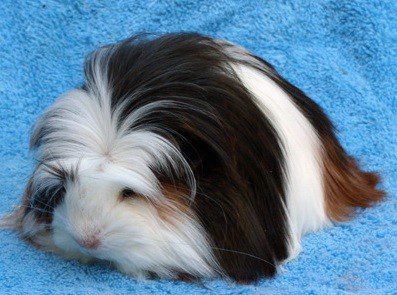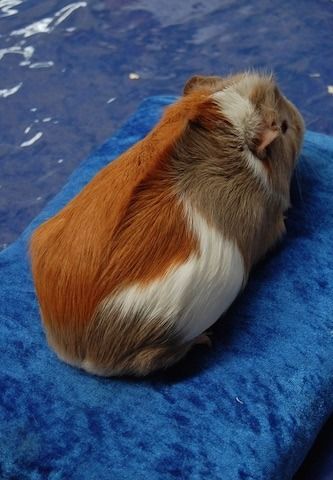
Guinea pig Ridgeback
Ridgeback Guinea Pig is a new and still quite rare breed that has received official recognition only in the UK and Sweden. It is very likely that ridgebacks will also be recognized in Australia in the very near future, as serious selection work is being carried out with this breed in this country. In other countries, the Ridgeback breed is not yet officially recognized, although breeding of these guinea pigs has been going on for more than 10 years.
Ridgeback Guinea Pig is a new and still quite rare breed that has received official recognition only in the UK and Sweden. It is very likely that ridgebacks will also be recognized in Australia in the very near future, as serious selection work is being carried out with this breed in this country. In other countries, the Ridgeback breed is not yet officially recognized, although breeding of these guinea pigs has been going on for more than 10 years.

From the history of ridgebacks
In all likelihood, the Ridgeback breed did not appear due to a genetic mutation (like many breeds of guinea pigs), but due to a homozygous combination of genes (when both genes are either recessive or dominant).
The country of origin of these pigs is unknown. Theoretically, the Ridgeback could have been born anywhere, but it is generally accepted that the UK is the birthplace of the Ridgeback, since it was there that the selective work on breeding this breed began. And in the early 90s of the last century, ridgeback pigs were given the status of a separate breed. In the UK, Ridgebacks now have the right to participate in exhibitions. In 2004 Ridgebacks get their own show standard.
In all likelihood, the Ridgeback breed did not appear due to a genetic mutation (like many breeds of guinea pigs), but due to a homozygous combination of genes (when both genes are either recessive or dominant).
The country of origin of these pigs is unknown. Theoretically, the Ridgeback could have been born anywhere, but it is generally accepted that the UK is the birthplace of the Ridgeback, since it was there that the selective work on breeding this breed began. And in the early 90s of the last century, ridgeback pigs were given the status of a separate breed. In the UK, Ridgebacks now have the right to participate in exhibitions. In 2004 Ridgebacks get their own show standard.
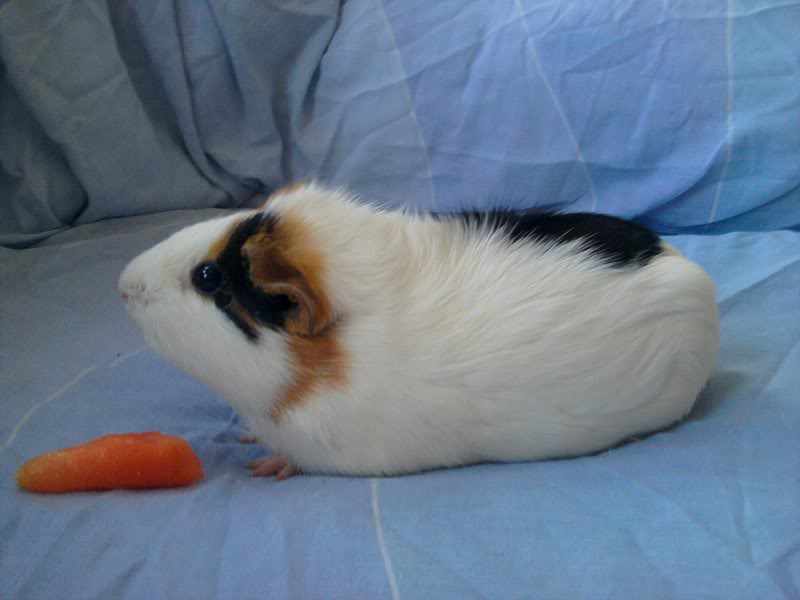
Features of the Ridgeback breed
The Ridgeback is a short-haired, smooth-haired guinea pig.
The most important and obvious feature is a ridge along the entire spine, stretching from the head to the sacrum of the guinea pig. “Ridge” in translation from English means “ridge, ridge”, “back” – “back”. The name of this breed is very telling, whatever one may say. The crest should ideally be short, straight and should look like the top of a mountain and run all the way along the back without interruption. An interesting fact is that Ridgeback babies are not always born with this most characteristic crest. It may appear later, after a few weeks, and finally its presence and degree of manifestation can only be judged when the pigs reach the age of six months. Usually the crest in males is more pronounced and noticeable than in females.
Sometimes Ridgeback pigs can have rosettes on their coat, which is a violation of the standard.
Another feature is that the hair on the hind legs of Ridgebacks does not grow down, but up the paw, which looks pretty funny! A similar feature is present in Peruvian guinea pigs and Abyssinian.
The life expectancy of Ridgebacks is 4-7 years, which is slightly less than that of other breeds of pigs (simple smooth-haired guinea pigs, for example, have a life expectancy of 8-10 years)
The Ridgeback is a short-haired, smooth-haired guinea pig.
The most important and obvious feature is a ridge along the entire spine, stretching from the head to the sacrum of the guinea pig. “Ridge” in translation from English means “ridge, ridge”, “back” – “back”. The name of this breed is very telling, whatever one may say. The crest should ideally be short, straight and should look like the top of a mountain and run all the way along the back without interruption. An interesting fact is that Ridgeback babies are not always born with this most characteristic crest. It may appear later, after a few weeks, and finally its presence and degree of manifestation can only be judged when the pigs reach the age of six months. Usually the crest in males is more pronounced and noticeable than in females.
Sometimes Ridgeback pigs can have rosettes on their coat, which is a violation of the standard.
Another feature is that the hair on the hind legs of Ridgebacks does not grow down, but up the paw, which looks pretty funny! A similar feature is present in Peruvian guinea pigs and Abyssinian.
The life expectancy of Ridgebacks is 4-7 years, which is slightly less than that of other breeds of pigs (simple smooth-haired guinea pigs, for example, have a life expectancy of 8-10 years)
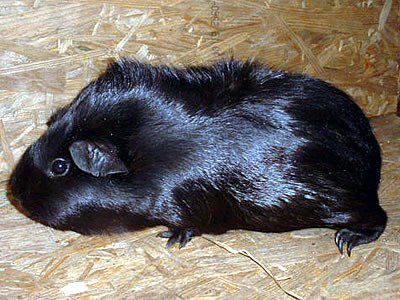
Ridgeback character
The breeders of these rare pigs (there are few of them, but they exist!) Claim that they are unusually kind and devoted creatures, sensitive to manifestations of love and affection. Ridgebacks love people, they are happy to allow themselves to be stroked and picked up. Enjoy playing with children.
The breeders of these rare pigs (there are few of them, but they exist!) Claim that they are unusually kind and devoted creatures, sensitive to manifestations of love and affection. Ridgebacks love people, they are happy to allow themselves to be stroked and picked up. Enjoy playing with children.
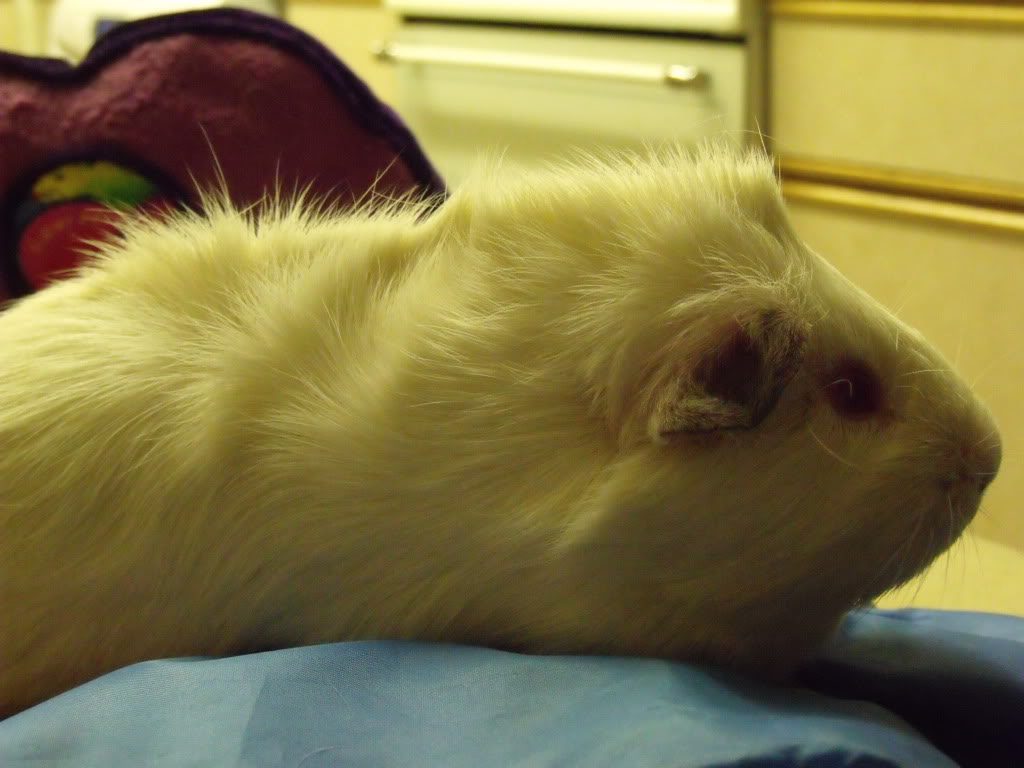
Like other newer breeds, the Ridgeback is gradually gaining popularity among breeders and owners, and we hope that we will soon see these unusual pigs in official breed lists around the world.
Like other newer breeds, the Ridgeback is gradually gaining popularity among breeders and owners, and we hope that we will soon see these unusual pigs in official breed lists around the world.




